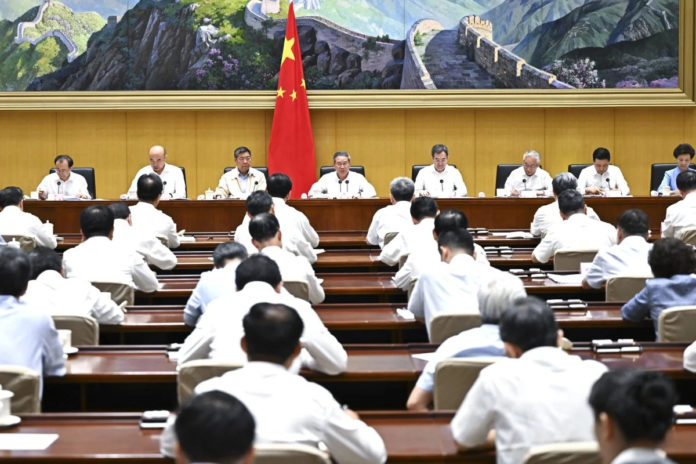
- China approved five new nuclear power projects in Shandong, Zhejiang, Jiangsu, Guangdong and the Guangxi Zhuang autonomous region on Monday
China accelerated its nuclear power expansion with the approval of five new projects totalling over an estimated 200 billion yuan (US$28 billion) as Beijing stepped up efforts to boost investment in the sector and accomplish its annual economic growth target.
The approval for the projects in the coastal provinces of Shandong, Zhejiang, Jiangsu, Guangdong and the Guangxi Zhuang autonomous region was given during an executive meeting of China’s cabinet, the State Council, chaired by Premier Li Qiang on Monday.
The five projects involve 11 reactors, which represents the largest number of units approved since 2019.
“The uptick in industry sentiment, coupled with the increase in new nuclear power project approvals, is poised to drive growth for equipment suppliers and operators,” Guolian Securities analyst He Zhaohui said on Tuesday.
The approvals followed a call from China’s top leaders during the third plenum in July to be “firmly committed to accomplishing the goals for this year’s economic and social development”.
China National Nuclear Power received approval for three reactors, the company said in a statement on Monday, while the State Power Investment Corporation said it had received approval for two units.
CGN Power, the listed unit of the state-owned China General Nuclear Power Corporation, said in a Hong Kong stock exchange filing on Tuesday that it had received approvals for six reactors across three sites.
China has been steadily expanding its nuclear power investment over the past five years, with the finished value of investment climbing year by year since 2019, when investment stood at 33.5 billion yuan (US$4.7 billion), according to data from the National Energy Administration.
In the first half of the year, such investment stood at more than 40 billion yuan, representing 13.5 per cent growth year-on-year, according to Guolian Securities.
In 2023, the finished value of investment in nuclear power plants grew by 20 per cent from 2022 to more than 90 billion yuan, marking a five-year peak.
China operates 55 nuclear power plants, ranking third globally, and with 36 units under construction, it possesses the world’s largest nuclear power construction pipeline, according to the state-backed Xinhua News Agency.
According to the World Nuclear Association, about 60 power reactors are being constructed in 16 counties, with about 50 per cent in China.
On Monday, TerraPower – whose chairman is Microsoft co-founder Bill Gates – broke ground on a nuclear power plant in the US state of Wyoming.
China’s latest approval followed the release of new green-transition guidelines by the State Council last week, which vowed to accelerate the construction of green energy bases, including nuclear power plants in coastal areas, wind and solar farms in the northwest and thermal power plants in the southwest.
China has set a goal of reaching peak carbon dioxide emissions before 2030, and achieving carbon neutrality by 2060.
It aims to raise the share of non-fossil consumption to 25 per cent by 2030, and gradually reduce coal consumption in the next five years.
China’s nuclear power units generated 433.3 billion kilowatt-hours of electricity in 2023, contributing around 5 per cent of the nation’s power supply and displacing over 123.3 million tonnes of coal, according to the China Nuclear Energy Association.
Source: SCMP



